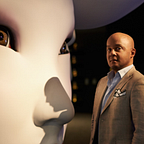These are topics that until 2015 were mostly regarded as gimmicks. By now, the tech giants have gone full-throttle ahead and a large part of innovation investment is aimed towards these new technologies. But what is it exactly and more importantly, what can you do with it?
VR, AR and 360 video. For outsiders, the differences are small are are easily confused. Briefly now, an overview of the various main forms.
• 360 video. This is also considered to be immersive video and is a panoramic view of 360 degrees, often also upwards and downwards. You can watch 360 video on your desktop by moving the mouse, on your mobile phone by moving it all around or with the aid of VR glasses.
• Virtual Reality means illusionary reality. You take the user to a another world than the one he/she finds him/herself in at that moment. This can be done via 360 video but also via computer animation or even a combination of the two.
• Augmented Reality. This presents reality through a lens or glasses wherein live (computer) generated information is simultaneously added.
For entertainment, communication or to offer relief from health disorders. When you consider what is possible in these virtual worlds, you realise that this technology is only just in its infancy. A great example of this is a father who sees through the eyes of his daughter (link) just how she wrestles with her eating disorder. The current Dinosaur promotion campaign from Albert Heijn shows how mainstream this is becoming.
An extraordinary future lies ahead for AR. By combining the existing world with a virtual one, the focus quickly turns towards real challenges and matters that can improve our lives today. Soon, when you are stranded along the highway with car trouble, the “ANWB” emergency services employee can advise you what to do from a distance. Both in education and health care, the possibilities are endless and we are on the cusp of a veritable revolution.
360 video provides a completely new video experience. You are able to choose yourself where and what you see. Conflict areas or demonstrations, for example, that you are suddenly standing in the middle of. Or how about a soccer match, where it seems like you are the 12th player. Facebook has already been experimenting with this for some time. When the new Game of Thrones series 5 was launched, the iconic introduction clip was placed on Facebook as a 360 video. This quickly became the best watched clip on Facebook.
A revolution?
How quickly these new technologies will conquer the world still depends on the peripheral equipment. When we look at AR, we see that Google Glass was practical in theory, but also a little too creepy for the times. The Microsoft Holo lens looks like something you can buy in stores today. But it is only exclusively available; there are only 22 in the Netherlands. And no matter how complete the Microsoft product is; people are still none too keen on wearing a Top Gun helmet in public.
The Oculus Rift en de HTC Vive are complete VR sets, with high-quality and real-life VR. The amount of computer power required is still absurdly high, however. Intel estimates that only 1% of the existing desktops in the world can handle VR at all. But, developments can happen quickly. Ten years ago, who would have thought that the whole world would be walking around with super computers connected to internet 24 hours a day?
If we make another leap of the imagination, we can create a world without boundaries with the help of these technologies. Talking to someone as if they were standing next to you and using holograms. Transporting yourself from one place in the world to another, or even beyond, by virtually living on Mars, for example. Our shared daydream automatically leads to the (digital) Unicorn of the world: MagicLeap. It already enjoys more than three billion in funding and all of the biggest tech giants are involved. But remember, there is no tangible product on the market and for the time being, it is shrouded in a cloud of secrecy. What we do know, are the stories told by those who, under strict conditions, were allowed to take a look. And they all say the same thing: you are not going to believe this. It is a technology that they themselves call “mixed reality” whereby your brain experiences the images that you see as real.
And that brings us directly to the last consideration for the future. Because what if everything looks so real that we can no longer distinguish from what is fake? Are you actually cheating when you virtually cheat on your partner? When someone does something virtually, are they liable for their actions in the real world? Are the memories you make in virtual worlds real memories from now on?
It is a no-brainer to make the first steps in the areas of AR, VR and 360. Not because you might make money tomorrow, but because you should be prepared for this inevitable wave of innovation. Think big, raise your knowledge level and find out how it may or may not be relevant for your type of service provision. Pre-sort for disruption and you may very well be the new disruptor of the future. See you back in reality!
